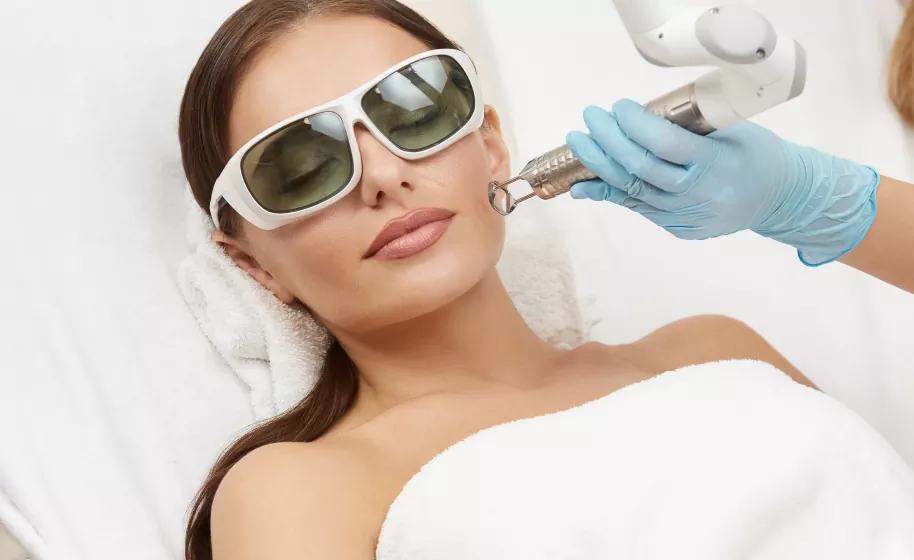Introduction to Laser Skin Rejuvenation
Laser skin rejuvenation is a go-to choice for those seeking to refresh their appearance without surgery. Using precise light-based technology, lasers target specific skin layers to correct imperfections, stimulate collagen production, and promote a smoother, more even complexion.
With a variety of laser types available, treatments can be customized to address individual concerns, from sun damage to deep wrinkles. Understanding these options empowers you to choose the right approach for your skin goals, whether you’re aiming for subtle rejuvenation or dramatic transformation.
Types of Facial Laser Treatments
Laser treatments fall into three main categories, each suited to different needs and recovery preferences:
-
Ablative Lasers: These, like CO2 and Erbium YAG lasers, remove the outer layers of skin to tackle deep wrinkles, scars, or sun damage. While highly effective, they require longer recovery times—often a week or more—due to their intensity. They’re ideal for those seeking significant resurfacing results.
-
Non-Ablative Lasers: Options like Nd:YAG or Diode lasers work beneath the skin’s surface, stimulating collagen and elastin without damaging the outer layer. These treatments offer minimal downtime, making them perfect for those with busy schedules who want subtle improvements with little disruption.
-
Fractional Lasers: Blending the benefits of ablative and non-ablative approaches, fractional lasers (e.g., Fraxel or Fractional CO2) treat only a fraction of the skin’s surface, creating micro-injuries that heal quickly. They’re excellent for addressing acne scars, fine lines, and uneven texture while balancing efficacy with shorter recovery periods.
Each type offers unique benefits, and a dermatologist can help determine which aligns with your skin concerns and lifestyle.
Specialized Laser Techniques and Their Uses
Beyond broad categories, specific laser technologies target distinct skin issues with precision:
-
Q-Switched Lasers: Known for their ability to break down pigmentation, these lasers treat age spots, melasma, and even tattoos. Their pinpoint accuracy minimizes damage to surrounding tissue, making them ideal for targeted concerns.
-
Pulsed Dye Lasers (PDL): These focus on vascular issues, such as rosacea, spider veins, or redness. By targeting blood vessels, PDL treatments reduce flushing and improve skin tone with minimal discomfort.
-
Intense Pulsed Light (IPL) and LED Therapy: While not true lasers, these light-based treatments address pigmentation, acne, and early signs of aging. IPL uses broad-spectrum light for a versatile approach, while LED therapy employs specific wavelengths to calm inflammation or boost collagen, offering gentle, no-downtime options.
These specialized techniques allow for highly tailored treatments, ensuring effective results for specific skin challenges.
Who’s a Candidate for Laser Treatments?
Laser skin rejuvenation isn’t one-size-fits-all. Ideal candidates typically have concerns like wrinkles, scars, or uneven pigmentation but should be in good overall health. Those with active acne, very dark skin tones, or significant skin laxity may require alternative treatments to avoid complications like hyperpigmentation or burns.
A thorough consultation with a board-certified dermatologist is essential to assess your skin type, medical history, and goals. They’ll recommend the best laser type—whether light, medium, or deep—and customize a treatment plan to maximize safety and results. Skin tone, sensitivity, and desired downtime all play a role in selecting the right approach.
Post-Treatment Care for Optimal Results
Proper aftercare is critical to achieving and maintaining the benefits of laser treatments. Depending on the laser type, you may experience redness, swelling, or mild peeling, which typically subsides within days to a week. To support healing:
-
Cleanse Gently: Use a mild, non-irritating cleanser to keep the treated area clean.
-
Moisturize and Protect: Apply soothing ointments or hydrating creams as recommended, and use a broad-spectrum SPF 30+ sunscreen daily to shield healing skin from UV damage.
-
Avoid Irritants: Steer clear of harsh skincare products, direct sun exposure, or excessive heat (like saunas) during recovery.
Results can appear immediately for some treatments, with improvements continuing for months as collagen rebuilds. Regular skincare and follow-up treatments, if needed, can extend results for a year or longer.
Why Explore Laser Skin Rejuvenation Now?
Laser treatments offer a powerful way to address skin concerns with precision and minimal invasiveness. Whether you’re looking to smooth wrinkles, fade scars, or even out your complexion, the range of available technologies ensures there’s an option for nearly everyone. Advancements in laser systems have made treatments safer, more effective, and more accessible, with shorter recovery times than ever before.
By consulting with a skincare professional, you can create a personalized plan that aligns with your aesthetic goals and lifestyle. Investing in laser skin rejuvenation not only enhances your appearance but also boosts confidence, helping you feel radiant at any age.
Your Next Step: Schedule a consultation with a dermatologist to explore which laser treatment suits your needs. Ask about treatment specifics, expected results, and costs to make an informed decision. Your journey to healthier, more vibrant skin starts today.

